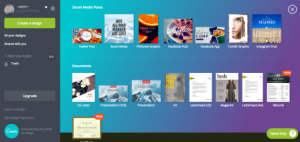
This is the eighth installment of the #SellMore Small Business Boot Camp series, in which we have already discussed how to find a product niche, how to source your product, how to evaluate your small business idea, business laws and nuances you’ll need to address, how to conduct market research and how to categorize your market competition and how complete a competitive analysis. This week, we’ll be covering how to find your target market and begin to sell to them.
You’ve done a great deal of work over the course of the Small Business Boot Camp to help your business succeed. Now, it’s time to ensure you have enough customers to buy the product or service offered.
Although your products might appeal to a large group of people, it doesn’t necessarily make sense to market to everyone. Stay focused on a very targeted audience, especially at the beginning. Having a specific and clear vision of your expected customer base will help keep your efforts focused and provide a higher rate of return.
In this week’s #SellMore video, you’ll learn how to identify your target market and how to communicate with that audience to increase conversions and grow your online business.
Gather Intel: The Importance of Your Target Market
Having a clear vision of your expected customer base will increase your business’ chances of success. Clearly defining your target audience — whether it’s senior citizens, busy moms or millennials in California — can help answer a lot of questions and overcome obstacles that may be plaguing you as you kick-start your online store. Some of the business questions you’ll be addressing include:
- Is the potential market for your product or service large enough? Are there enough customers with relevant interests to create demand?
- Do you need to alter your business idea to best appeal to this audience?
- Should you tailor your product or service in some way to maximize effectiveness?
- How can you best target your marketing efforts to optimize reach with the most promising potential buyers?
Stay Organized: Create Customer Profiles
You’ll want to not only figure out why someone would want to buy your product or services but also who is most likely to buy it. Often, you will discover that those who find your product or service appealing share similar characteristics, which will help you in fine-tuning your business messaging from top to bottom. In order to uncover those traits about your customers, craft a customer profile to help you guide your research.
Demographic Criteria will get you started:
- Age
- Location
- Gender
- Income Level
- Education Level
- Marital or Family Status
- Occupation
- Ethnic Background
Psychographic Criteria will go a little deeper, bringing to light more of your target audience’s psychology:
- Interests
- Hobbies
- Values
- Attitudes
- Behaviors
- Lifestyle preferences
Remember, every industry, business and product is going to be different so these lists are by no means the end-all-be-all. Don’t be afraid to be clever, make adjustments and include criteria designed to add interesting layers to your customer profile — the more you know your customer, the more likely you are to achieve your specific business goals.
Be Specific: A Word to the Wise
Narrowly defining your target customer is more of an art than a science. As you get started, try to be as specific as possible. By starting with a specific customer profile, you’ll be able to make the most educated decisions.
Oftentimes, new entrepreneurs worry they will be too specific as they conduct their research. They tend to feel they’ll limit their business’s reach or the number of potential customers as a whole. This is not true. By identifying your specific target audience, you will have a guide in which you can always come back to, helping to ensure you make decisions that are dictated by your customers.
Also, who said you cannot have multiple niche markets in which you consider your “targets”? Check out Buffersocial’s Marketing Persona: The Complete Beginners Guide for a more in-depth walkthrough of why building out a multi-persona strategy can increase sales.
Work Smart: Tap Existing Resources
As we all know, it never hurts to Google it. You’ll often find there are a lot of existing resources that can help you pull together information about your industry, the market, your competition, and your ideal potential customer. The best part is, someone has already done the work.
In most instances, the information you gather won’t cost you a thing. However, the downside may be that the research you find may not be as focused or useful as you’d like. Below are a few resources to help get you started:
- Quantcast provides free, accurate and dependable audience insights for over 100 million web and mobile destinations
- Alexa transforms raw data into meaningful insights that will help you find your competitive advantage
- Compete helps to discover new business opportunities, monitor online competition and benchmark their performance
- Google Trends uncovers where your target customers are predominantly located
Also, don’t forget to think outside of the box! Every business is unique and your tactics for gathering information should be unique as well.
All of this information will help you learn more about your target audience so you can develop a strong brand identity.
Repurpose Your Hard Work: Look at Your Competition
Last week, we showed you how to complete a competitive analysis. Now, let’s take all you learned while you were completing your competitive research and organize it for your customers.
You’ll want to ask yourself a series of questions:
- What’s their market positioning? What are customers actually purchasing from them?
- How about their pricing? What are existing customers (who could be yours) willing to pay for your product or service? Are they willing to pay? Will they pay more if you offer something extra?
- What are customers saying on social media? What social media channels are they interacting with the most? What other interests do they list on their personal social media pages? What do they do for a living? What are their hobbies? What language are they using when it comes to your product or services?
- Are reviews screaming with opportunity? What weaknesses are identified that you may be able to address with your business?
Depending on how well your competitor is doing, you may not want to go after the same exact market. On the other hand, if their customers are extremely unsatisfied with current offerings, you may want to jump in. A smart business person will identify competitors’ weaknesses and overlooked areas of the market, and capitalize on them to drive business success.
Send Out Feelers: Conduct Your Own Primary Research
You can learn about your target audience through what is known as primary research. This involves learning about customer buying habits through direct contact. Although primary research can be a little more expensive than piggy-backing on other research or just digging into your competitors, it allows you to truly hear the voice of your customer and find answers to specific questions about your business.
Here are some things you can try out:
- Distribute surveys: send surveys to existing and potential customers via postal services, email or a web-based service like Zoomerang or SurveyMonkey.
- Conduct interviews: Talk to people you trust and whose purchasing habits dovetail with your small business. At trade shows, for example, stand in a high-traffic area and ask people to answer a few short questions.
- Assemble focus groups: Get feedback from a small group of consumers who fit your ideal customer profile. Facilitate Q&A sessions and group discussions.
Reassess: Look at Your Product or Service with a Fresh Light
Now that you have some serious insight into who you are selling to and how your product or service has been received in the past by your competitors, it’s time to ask yourself a series questions.
- Do you feel there are enough potential customers within your target audience to start a brand new business?
- Will your target market benefit from your product or service?
- Will this target market see a true need for it? Will they come back repeatedly to purchase?
- Do I understand what drives my target market to make buying decisions?
- Can my target market afford my product or service? If so, how frequently can they buy?
- Can you reach your market with your message? How easily accessible are they?
Answering these questions will help you understand if you are truly ready to jump into business or if you need to pivot your online store to appeal to a new target market altogether.
You’ll also want to periodically reassess your target audience. Every six to 12 months, conduct additional primary research and refine your customer profile accordingly. As the marketplace shifts and evolves, your ideal clientele may change with it. Get ahead of the curve, and you’ll also be one step ahead of your competition.
(288)
Report Post





